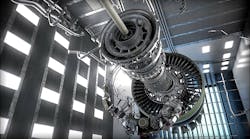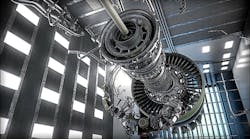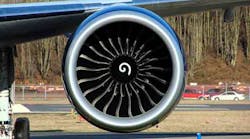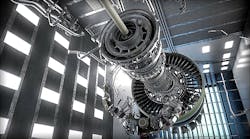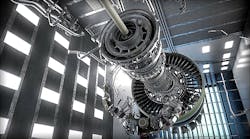Jet-engine developer GE Aviation reports that testing has been initiated for the first demonstration core of its GE9X engine, the power source that will be installed in the twin-engine Boeing 777X aircraft. According to GE, during the first round of tests at its altitude center near Cincinnati, the engine’s core section operated at maximum or redline speeds over the entire GE9X flight envelope, and exceeded the engine’s compressor pressure ratio 27:1 —the highest pressure ratio of any commercial aircraft engine in service now.
“The core test allows us to see all the key hot section modules — the HPC, combustor and HPT — working together as a complete system at least four years before the engine enters service,” explained Bill Millhaem, general manager of the GE90/GE9X engine programs at GE Aviation.
He called the test a critical step in the “GE9X technology maturation program, which has yielded extremely positive results and sets us on the right path for engine certification testing.”
The GE9X is a 100,000-lb. thrust, high-bypass turbofan engine developed specifically for the Boeing 777-8X/9X aircraft by GE Aviation, IHI Corporation, Safran, and MTU Aero Engines AG. Reportedly, GE and its partners will spend more than $1 billion this year for technology maturation and product development of the GE9X engine.
Almost 700 GE9X engines have been ordered since 2013.
Core testing follows a series of “maturation tests” that GE conducted on various engine systems, including the fan, high-pressure compressor (HPC), combustor, and low-pressure turbine.
After the first test next year, the engine is set for flight-testing on a flying test-bed in 2017, and engine certification scheduled for 2018.
